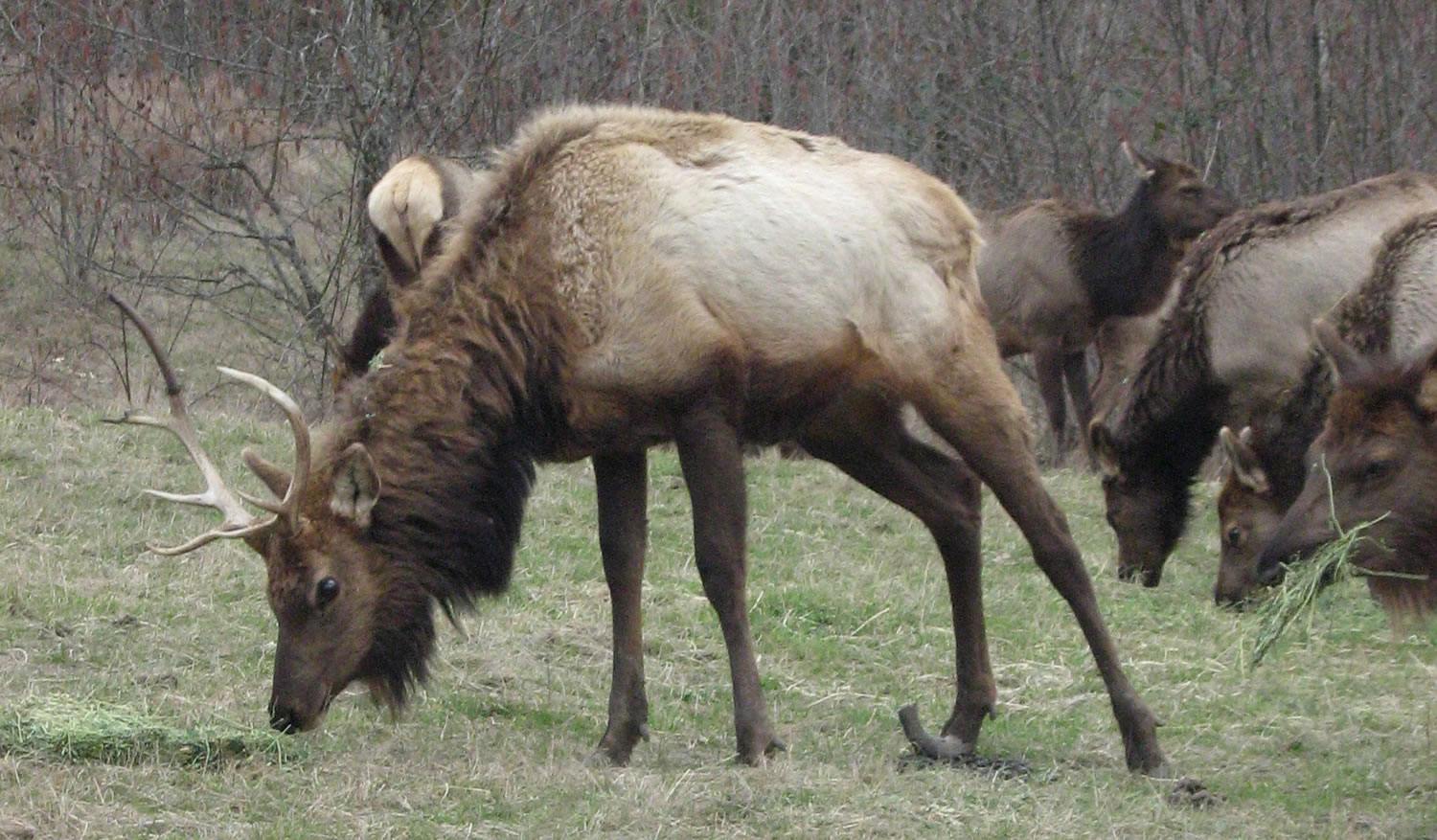LONGVIEW — State wildlife officials will host a public meeting Tuesday in Ridgefield to update the public about efforts to deal with elk hoof rot disease.
The Elk Hoof Disease Public Working Group will meet Tuesday from 1 to 4 p.m. at the Washington Department of Fish and Wildlife Region 5 headquarters, 5525 S. 11th St., Ridgefield.
Participants will discuss possible causes of hoof rot; WDFW’s partnership with Washington State University, which has received public money to research the disease; and next steps combatting hoof rot.
The Working Group includes Cowlitz County Commissioner Joe Gardner, Wahkiakum County Commissioner Daniel Cothren and Eco Park Resort owner Mark Smith, representatives from Weyerhaeuser Co., WSU, the state Department of Health, and the Puyallup Indian Tribe.
According to Smith, this is the first state meeting in almost two years regarding elk hoof disease. WSU will briefly review its work on hoof rot.
A new state law, passed July 21, directs the university to work with Fish and Wildlife to research the disease. The new state budget earmarked $1.5 million for that purpose, according to the Skagit Valley Herald.
This meeting comes not long after WDFW asked hunters to help reduce the spread of the disease by removing hooves of elk they shoot and leaving them in the field, according to a WDFW press release.
The cause of hoof rot is still disputed. Researchers from WSU and representatives from Fish and Wildlife believe that pesticides and herbicides aren’t a factor. However, local sportsmen have said foreign chemicals might be the culprit.
“Ninety percent of all the chemicals that (Weyerhaeuser) uses say ‘don’t use on grazing land,’ ” Smith said in May. “I have been asking the question for quite a while now, why do we allow forest land to be sprayed … when deer and other wildlife graze in these areas?”



